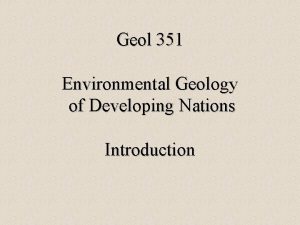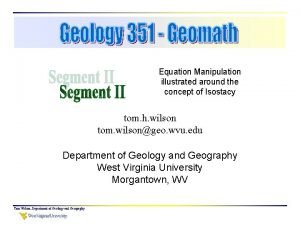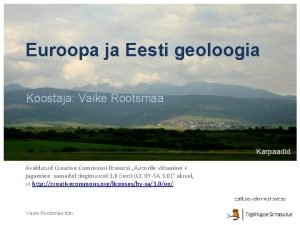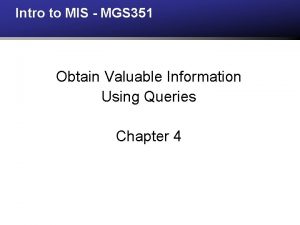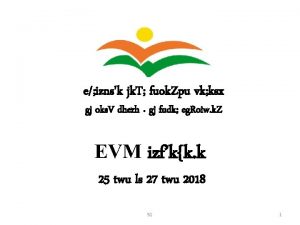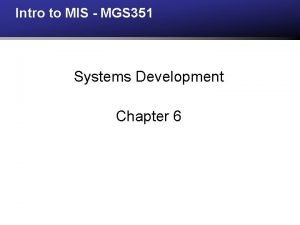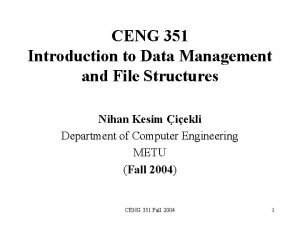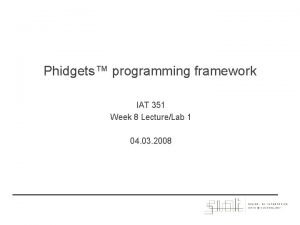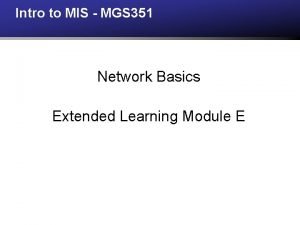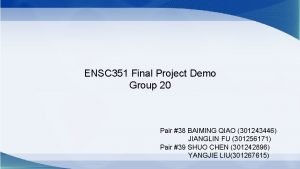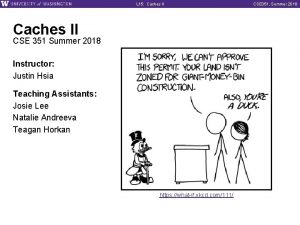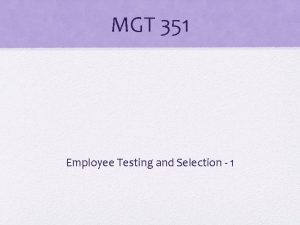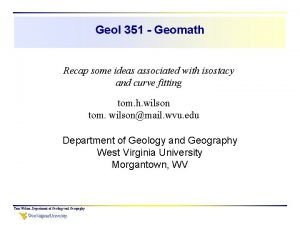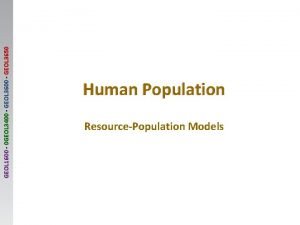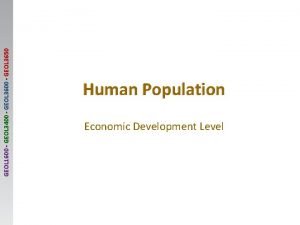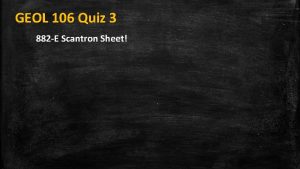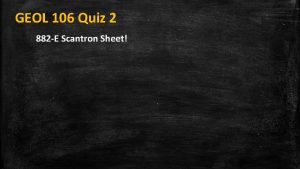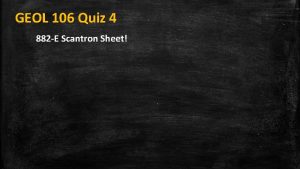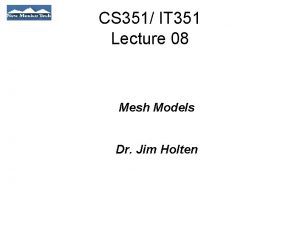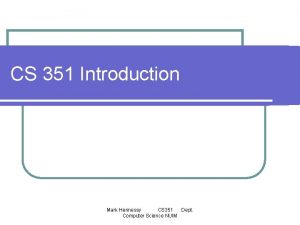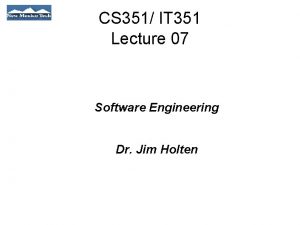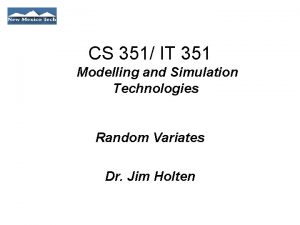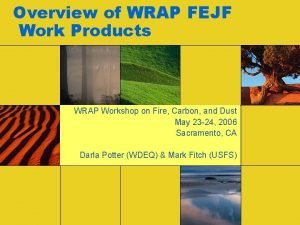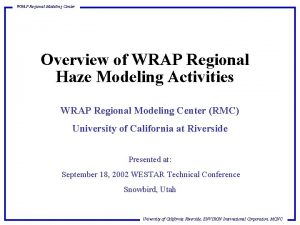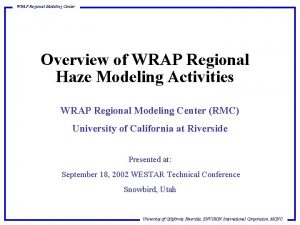Geol 351 Geomath Isostacy II Wrap up isostacy

























- Slides: 25

Geol 351 - Geomath Isostacy II - Wrap up isostacy and begin working on the settling velocity lab tom. h. wilson tom. wilson@mail. wvu. edu Department of Geology and Geography West Virginia University Morgantown, WV Tom Wilson, Department of Geology and Geography

Explanations for lowered gravity over mountain belts Back to isostacy- The ideas we’ve been playing around with must have occurred to Airy. You can see the analogy between ice and water in his conceptualization of mountain highlands being compensated by deep mountain roots shown below. Tom Wilson, Department of Geology and Geography

Other examples of isostatic computations Tom Wilson, Department of Geology and Geography

Another possibility Tom Wilson, Department of Geology and Geography

A B C The product of density and thickness must remain constant in the Pratt model. At A 2. 9 x 40 = 116 At B C x 42 = 116 At C C x 50 = 116 Tom Wilson, Department of Geology and Geography C=2. 76 C=2. 32

Some expected differences in the mass balance equations Tom Wilson, Department of Geology and Geography

Island arc systems – isostacy in flux Tom Wilson, Department of Geology and Geography Geological Survey of Japan

Topographic extremes Japan Archipelago North American Plate Tr uril h enc n Tre nch K late Ar nin nch Tre Izu -Bo nin -Bo Na Izu nk h oug r T ai c Japa P ian s a r Eu Pacific Plate Philippine Sea Plate Tom Wilson, Department of Geology and Geography Geological Survey of Japan

The Earth’s gravitational field North American Plate In the red areas you weigh more and in the blue areas you weigh less. T h oug r T ai nk Na ras ch Tren Philippine Sea Plate Izu-Bonin Arc Eu onin Izu-B late P ian Pacific Plate Japa n Tre nch g ~0. 6 ril u K cm/sec 2 h nc e r Tom Wilson, Department of Geology and Geography Geological Survey of Japan

Quaternary vertical uplift Geological Survey of Japan Tom Wilson, Department of Geology and Geography

The gravity anomaly map shown here indicates that the mountainous region is associated with an extensive negative gravity anomaly (deep blue colors). This large regional scale gravity anomaly is believed to be associated with thickening of the crust beneath the area. The low density crustal root compensates for the mass of extensive mountain ranges that cover this region. Isostatic equilibrium is achieved through thickening of the low-density mountain root. Total difference of about 0. 1 cm/sec 2 from the Alpine region into the Japan Sea Tom Wilson, Department of Geology and Geography Geological Survey of Japan

Schematic representation of subduction zone The back-arc area in the Japan sea, however, consists predominantly of oceanic crust. Tom Wilson, Department of Geology and Geography Geological Survey of Japan

Tom Wilson, Department of Geology and Geography Geological Survey of Japan

Tom Wilson, Department of Geology and Geography Geological Survey of Japan

Tom Wilson, Department of Geology and Geography Geological Survey of Japan

Watts, 2001 Tom Wilson, Department of Geology and Geography

Watts, 2001 Tom Wilson, Department of Geology and Geography

Tom Wilson, Department of Geology and Geography http: //pubs. usgs. gov/imap/i-2364 -h/right. pdf

Crustal thickness in WV Derived from Gravity Model Studies Tom Wilson, Department of Geology and Geography

http: //www. nasa. gov/mission_pages/MRO/multimedia/phillips-20080515. html http: //www. sciencedaily. com/releases/2008/04/080420114718. htm Tom Wilson, Department of Geology and Geography

Surface topography represents an excess of mass that must be compensated at depth by a deficit of mass with respect to the surrounding region See P. F. Ray http: //www. geosci. usyd. edu. au/users/prey/Teaching/Geol-1002/HTML. Lect 1/index. htm Tom Wilson, Department of Geology and Geography

Isostacy wrap-up Any questions about the Mount Everest and tectonic thickening problems returned today? Tom Wilson, Department of Geology and Geography

Take Home Problem (due this Thursday) A mountain range 4 km high is in isostatic equilibrium. (a) During a period of erosion, a 2 km thickness of material is removed from the mountain. When the new isostatic equilibrium is achieved, how high are the mountains? (b) How high would they be if 10 km of material were eroded away? (c) How much material must be eroded to bring the mountains down to sea level? (Use crustal and mantle densities of 2. 8 and 3. 3 gm/cm 3. ) There actually 4 parts to this problem - we must first determine the starting equilibrium conditions before solving part a. Tom Wilson, Department of Geology and Geography

Remember you are redistributing the excess crustal thickness (h) through time The importance of Isostacy in geological problems is not restricted to equilibrium processes involving large mountain-belt-scale masses. Isostacy also affects basin evolution because the weight of sediment deposited in a basin disrupts its equilibrium and causes additional subsidence to occur. Isostacy is a dynamic geologic process. Tom Wilson, Department of Geology and Geography

Today and Thursday Text problems 3. 10 and 3. 11 are due today. The take-home isostacy problem is due this Thursday. Let’s get started on the Settling Velocity lab There will be a mid-term test on Thursday (February 27 th). We’ll have a review session on Tuesday the 25 th. Note that mid-term exam will be in rm 325 Brooks Tom Wilson, Department of Geology and Geography
 Geology 351
Geology 351 Isostacy
Isostacy Settelünk geoloogias
Settelünk geoloogias 43.351.097/0001-90
43.351.097/0001-90 Succeedsoft
Succeedsoft Mgs 351
Mgs 351 Cse 351 lab 5
Cse 351 lab 5 Mgs351
Mgs351 351 0787268
351 0787268 Define the eight stages of the sdlc
Define the eight stages of the sdlc Balcarce 351 lomas de zamora
Balcarce 351 lomas de zamora Ceng 351
Ceng 351 Iat
Iat Mgs 351
Mgs 351 Ensc 351
Ensc 351 351 cache simulator
351 cache simulator Mgt 351 nsu course outline
Mgt 351 nsu course outline Insurance specialty group
Insurance specialty group Wrap uk
Wrap uk Milady chapter 27 review questions
Milady chapter 27 review questions Daily maintenance plan wrap
Daily maintenance plan wrap Contraindications of paraffin wax
Contraindications of paraffin wax Wrap it up signal
Wrap it up signal Environmental tip of the day
Environmental tip of the day Milady chemical texture services
Milady chemical texture services Define wrap up
Define wrap up
